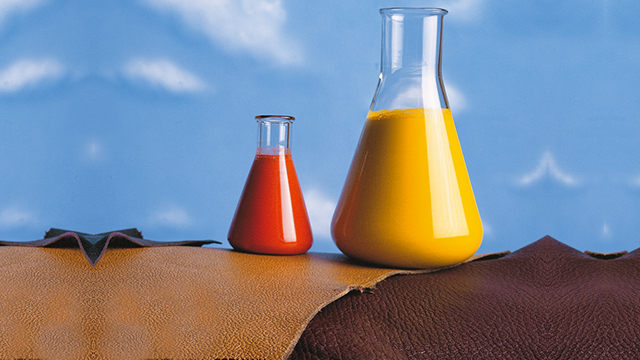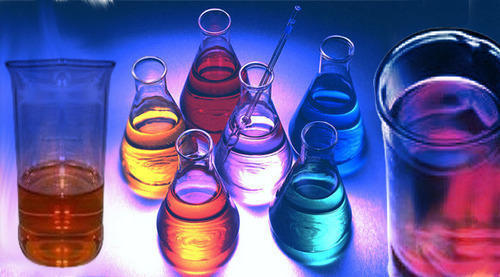
Leather has been used for centuries in the fashion and luxury industries for its durability, versatility, and aesthetic appeal. The production of leather involves a series of intricate processes that transform raw animal hides into high-quality leather products. To achieve accurate results in the leather production process, the use of leather process chemicals is essential. In this article, we will discuss the importance of leather tanning chemicals and their role in achieving accurate results in the leather production process.
What Are Leather Process Chemicals?
Leather process chemicals refer to a variety of chemicals used during the different stages of leather production. These chemicals help to achieve the desired quality, texture, and color of the leather. Leather tanning chemicals can be categorized into four types: beam house chemicals, tanning chemicals, dyeing and fatliquoring chemicals, and finishing chemicals.
Beamhouse chemicals are used in the initial stages of leather production, where the hides are washed, de-aired, and de-fleshed. These chemicals include sodium sulfide, lime, and enzymes. Tanning chemicals are used to convert the protein in the hides into a stable material that will not decompose. Common tanning chemicals include chrome, vegetable tannins, and aldehydes.
Dyeing and fatliquoring chemicals are used to give the leather its desired color and texture. These chemicals include dyes, oils, and emulsifiers. Finishing chemicals are used to enhance the appearance and durability of the leather. They include coatings, waxes, and resins.
It is crucial to use the right leather process chemicals for specific leather types, as different types of leather require different chemicals for optimal results. For example, vegetable-tanned leather requires different chemicals from chrome-tanned leather.
Importance of Leather Tanning Chemicals for Accurate Results
The use of leather tanning chemicals is crucial in achieving accurate results in the leather production process. These chemicals play a significant role in the physical and chemical transformation of the hides into leather. The following are the benefits of using leather process chemicals for accurate results:
Role of Leather Process Chemicals in the Leather Production Process
Leather tanning chemicals are used in various stages of the leather production process, from the initial cleaning and de-airing of the hides to the final finishing stages. Each chemical used in the process serves a specific purpose, and using the wrong chemical can result in poor-quality leather. For example, using too much lime during the beam house stage can result in brittle and weak leather.
Benefits of Using Leather Tanning Chemicals for Accurate Results
Using the right leather process chemicals can result in high-quality leather products that meet the required standards. These chemicals help to achieve uniformity in texture, color, and durability. They also help to reduce processing time and costs, which is essential for businesses that rely on leather production.
Consequences of Not Using the Right Leather Process Chemicals
Not using the right leather tanning chemicals can result in poor-quality leather that does not meet the required standards. The leather may be weak, brittle, or discolored, which can lead to customer dissatisfaction and loss of business. The use of the wrong chemicals can also result in health hazards to the workers involved in the production process.
Examples of Leather Tanning Chemicals and Their Functions

The following are some examples of leather tanning chemicals and their functions
Sodium sulfide: Used in the beam house stage to remove hair and flesh from the hides.
Lime: Used in the beam house stage to soften the hides and remove unwanted materials.
Chrome: Used in the tanning stage to stabilize the protein in the hides.
Vegetable tannins: Used in the tanning stage to create a natural, organic tan.
Dyes: Used in the dyeing stage to add color to the leather. 6. Fatliquors: Used in the fatliquoring stage to add softness and flexibility to the leather.
Coatings: Used in the finishing stage to enhance the appearance and durability of the leather.
Functions of Leather Tanning Chemicals
Sodium sulfide: It breaks down the proteins that hold the hair and flesh to the hides, making them easier to remove.
Lime: It removes unwanted materials from the hides and softens them for further processing.
Chrome: It stabilizes the proteins in the hides, preventing them from decomposing and ensuring durability.
Vegetable tannins: They provide a natural and organic tan to the leather, which is preferred by some consumers.
Dyes: They add color to the leather, making it more appealing to consumers.
Fatliquors: They add softness and flexibility to the leather, making it more comfortable to wear.
Coatings: They protect the leather from water, dirt, and other environmental factors, ensuring its durability.
Benefits of Using Specific Leather Process Chemicals
Using specific leather tanning chemicals for specific leather types can result in high-quality leather products that meet the required standards. For example, using vegetable tannins for vegetable-tanned leather can result in a natural and organic tan that is preferred by some consumers. Using chrome tanning for chrome-tanned leather can result in durable and water-resistant leather that is suitable for outdoor use.
Safety Considerations When Using Leather Tanning Chemicals
Leather tanning chemicals can be hazardous if not handled properly. It is crucial to follow safety precautions when handling these chemicals to ensure the safety of the workers involved in the production process. The following are some safety considerations when using leather tanning chemicals:
Explanation of Safety Precautions When Handling Leather Process Chemicals
Personal protective equipment (PPE): Workers should wear appropriate PPE, such as gloves, aprons, and goggles when handling leather tanning chemicals.
Ventilation: The production area should have adequate ventilation to prevent the accumulation of fumes and chemicals.
Storage: Leather tanning chemicals should be stored in a safe and secure location away from heat and direct sunlight.
Handling: Workers should follow proper handling procedures when working with leather tanning chemicals, such as avoiding direct skin contact and washing hands thoroughly after handling.
Importance of Safety Precautions
Following safety precautions when handling leather process chemicals is crucial to ensure the safety of the workers involved in the production process. Exposure to these chemicals can result in skin irritation, respiratory problems, and other health hazards.
Recommended Safety Measures
Employers should provide adequate training to workers on the safe handling and use of leather tanning chemicals. They should also provide appropriate PPE and ensure that workers follow safety procedures when working with these chemicals. Regular monitoring and evaluation of safety measures should be conducted to ensure their effectiveness.
Conclusion
Leather process chemicals are essential for achieving accurate results in the leather production process. Using the right chemicals for specific leather types can result in high-quality leather products that meet the required standards. However, it is crucial to follow safety precautions when handling these chemicals to ensure the safety of the workers involved in the production process. As consumers, we have a responsibility to choose leather products that are produced responsibly and sustainably. By doing so, we can support the leather industry while ensuring that the production process is safe and environmentally friendly.





